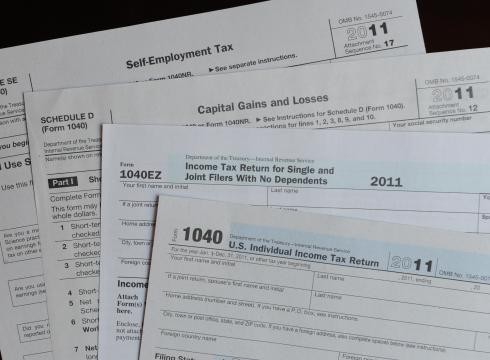Six Figure Investor How To File Your MLP K1 On Your Taxes
Post on: 16 Март, 2015 No Comment

How To File Your MLP K-1 On Your Taxes
A new year brings a new tax return! To get a head start on this Im going to talk about the filing of K-1 forms. If you dont invest in MLPs, this will also give you an idea of how these are accounted for on your tax return.
One of the main reasons why many people dont invest in Master Limited Partnerships (MLP) is due to the complexity of filing taxes. It is more complicated than simple corporate common stock because when you own units in an MLP you actually are a partner in the company. As a partner, you need to account for each component of the business in your personal taxes including gains/losses, dividends/interest and company deductions.
While it is more complicated, it is not overly burdensome. In this article I will show you what your getting yourself in when you file your K-1 on your income taxes using documentation from a 2010 tax filing. This is meant as a overview of the process, not necessarily an exact how to guide for every type of filing and investment.
Before You Buy
If you invest in an MLP, there are a few things you should know about because even absent the additional tax complication these investments behave differently than other kinds of investments. The MLP itself gets the benefit of putting the tax burden on you, the investor, which relieves them of paying taxes. In exchange for this benefit, the MLP hires an army of accountants to track your investment and keep good records. While this will help you when you sell, the year in and year out accounting of business activity will need to be taken care of by you.
Keep these points in mind:
- The MLP will send you one K-1 across all of your accounts. If you own the MLP in more than one broker you wont have to file separate forms because the K-1 consolidates all the activity. Dont worry about keeping your units across accounts.
- When you sell, you dont get to chose which shares to sell, you use the average price of all the shares your own (this is the method that is approved by the IRS). If you have owned shares for a while with an advantageous cost basis, you may be surprised what your tax bill will be when you combine price appreciation with your reduced cost basis you have accumulated over time. Unfortunately, the MLP may not actually provide cost basis using average price, you will need to calculate it yourself.
- Most of the income you receive is considered return of capital and isnt immediately taxable. This occurs when the depreciation of assets exceeds revenue (MLPs are a vehicle to enable an energy company to isolate and concentrate physical energy assets which allows large depreciation). This income isnt reported on your tax return, it will be accounted for when you sell.
- When your costs basis goes below zero, you will need to start paying taxes on your distributions (even if you dont sell). In most cases, this will take a while perhaps 10 or more years of holding.
The Paperwork You Will Get Every Year

Each year before you file your taxes, the MLP will send you a package that contains all the information you need to file your tax return. Here are the individual items:
- K-1, summarizes business activity for the year.
- K-1 filing instructions. These instructions vary depending on specific activity. Some of the MLPs will provide a visual diagram (see the one attached below) to assist you in filing. They will tell you what amounts are relevant for your individual tax return. Even if they do not provide the fancy diagram, they will at least provide a box by box instruction manual.
- Sales Form If you sold any of your position, they will provide a summary, including cost basis adjustments. As noted above, the MLP may not report your cost basis using average cost, it may be FIFO.
Filing Current Year Income/Losses
The K-1 looks complicated. Its isnt a simple statement about what you earned if you had invested in a corporate stock. But there are really only (4) lines on the K-1 that determine what your tax liability is for the tax year. These are the following:
1 Ordinary Business Income/Loss
5- Interest Income
6a Ordinary Dividends
11 Other Income/Loss
There may be other lines filled out for deductions and other gains, but I havent found these to be common. In any case, the MLP itself will provide instructions in your K-1 package to provide guidance if this situation arises.
Unusual Situations
The complexity in filing is caused by some unique situations which probably wont apply to you. Here are a few that Im aware of. You will need to consider these if you have a very large MLP position or if you own these inside an IRA.
- Line 20 Reports Unrelated Business Income (UBTI). You may need to pay taxes on UBTI if it is contained in your IRA. There is an exclusion of $1000, which doesnt sound like a lot but you would need a very large position to trigger taxes because these amounts are typically small.
- It is possible that you may need to file tax returns in each state the MLP does business. Again this would trigger if you had a very large position such that the income you earned was above state tax minimums. In my experience, the levels of income taxable each year are not any where close to these minimums. (If it is, they you are probably using an accountant anyway?)
- One potential situation that is somewhat more likely is the deductability of passive losses. If you have passive losses (say you are taking losses from a rental property not uncommon when considering depreciation) your current year passive loss deduction may be limited by your income. If Line 1 of your K-1 shows a loss, you will need to potentially adjust the amount currently deductible and carry forward the rest. I know, fun!














